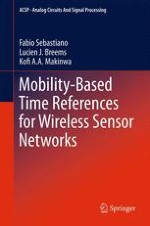2013 | OriginalPaper | Buchkapitel
5. Temperature Compensation
verfasst von : Fabio Sebastiano, Lucien J. Breems, Kofi A. A. Makinwa
Erschienen in: Mobility-based Time References for Wireless Sensor Networks
Verlag: Springer New York
Aktivieren Sie unsere intelligente Suche, um passende Fachinhalte oder Patente zu finden.
Wählen Sie Textabschnitte aus um mit Künstlicher Intelligenz passenden Patente zu finden. powered by
Markieren Sie Textabschnitte, um KI-gestützt weitere passende Inhalte zu finden. powered by
